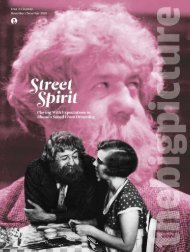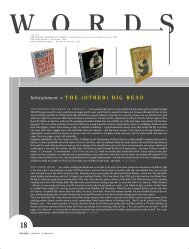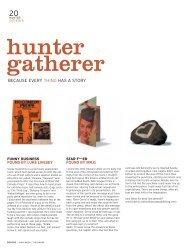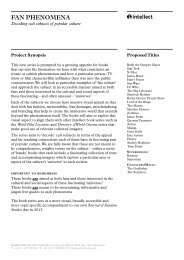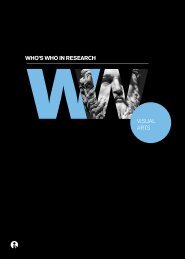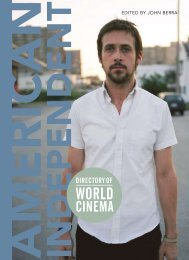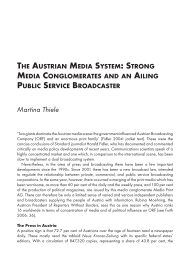Anthem - Intellect
Anthem - Intellect
Anthem - Intellect
You also want an ePaper? Increase the reach of your titles
YUMPU automatically turns print PDFs into web optimized ePapers that Google loves.
Signifying Europe<br />
a continuous crescendo from the gentle beginning up to a full climax with timpani<br />
and trumpets as the choir sings: ‘And all the people rejoic’d, and said: God save the<br />
King, long live the King, may he live forever! Alleluia, Amen.’ 426 These words are then<br />
repeated in shifting combinations with musical motifs.<br />
Whereas Händel’s Zadok lasts for more than 5 minutes with a 90 seconds<br />
instrumental introduction and a contrasting middle section, the UEFA anthem is 3<br />
minutes long, with just 25 seconds introduction. Its final 1-minute chorus is played<br />
before matches and television broadcasts. It is an adaptation made by Tony Britten<br />
in 1992, as part of the symbol package mentioned in Chapter 6, commissioned by<br />
TEAM. The music makes use of several elements from Handel’s original composition,<br />
but reshuffles and transforms them to suit the new context. The UEFA anthem thus<br />
differs in melodic detail from Zadok much more than the EU anthem diverges from<br />
Beethoven’s original work. It was performed by the Royal Philharmonic Orchestra<br />
and the Academy of St Martin in the Fields chorus, while a remixed version called<br />
‘Victory’ has also been used, released by Polish trance/dance duo Kalwi & Remi in<br />
2006. 427 Its choir sings simple, disjointed and heavily repeated phrases, alternating<br />
in UEFA’s three official languages: French, German and English. This multilingual<br />
montage exemplifies another way of dealing with heterogeneous situations than when<br />
lyrics are constructed in several parallel translations. The words express the strength<br />
of the teams and of the sports events: on the one hand ‘These are the best teams’,<br />
‘The masters’, ‘The biggest teams’ and ‘The Champions’, on the other hand ‘The main<br />
event’, ‘A big gathering’ and ‘A big sports event’. Together they designate the greatness<br />
of the national sports teams that fill UEFA with specific competence, and of the pan-<br />
European Champions League that is organised for them by UEFA. The climactic<br />
moment is set to the exclamations ‘Die Meister! Die Besten! Les Grandes Équipes!<br />
The Champions!’<br />
It is no coincidence that the German words in the hymn include the word<br />
‘Mannschaften’, which is the standard synonym of ‘teams’, belonging to the many words<br />
that tend to link sports to a masculine sphere, mirrored by the persistent privileging<br />
of male football also in this traditional context. Anthony King’s analysis of UEFA’s<br />
visual and musical symbols hears the Zadok anthem reinforcing the required aura of<br />
‘tradition and quality’.<br />
The majestic music which rises to an impressive major key crescendo<br />
signifies the installation of a new head of state. The baroque music of the<br />
Zadok anthem associates the Champions League with the monarchies<br />
of Ancien Regime Europe. The baroque music also interconnects with<br />
the silver house colours, for the aristocratic connotations evoked by<br />
the silver are reflected and affirmed in this noble music. 428<br />
186



